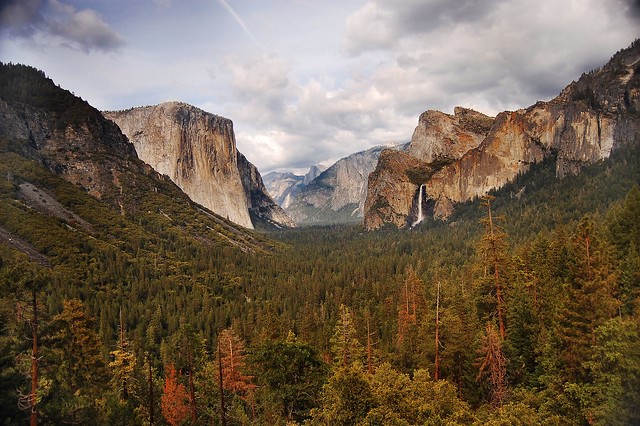<p>Colorado is a state famous for stunning natural landscapes. Its relief is extremely diverse &#8211; you can see extensive plains and high mountains, canyons and plateaus.</p>
<p>The impressive unique beauty of snowy cliffs covered with coniferous forests and the mild climate of the state, surrounded and protected from the wind by a belt of mountains, made Colorado the center of the U.S. tourism. Plus, a well-developed road system contributes to increasing the popularity of road trips. And this is not surprising, because according to Firefly car rental Denver reviews, it’s the most convenient way to travel around the United States.</p>
<p>So, if you want to explore the most beautiful natural sights of Colorado, then follow these places&#8230;</p>
<h2><strong>Black Canyon of the Gunnison National Park</strong></h2>
<p><a href="https://flic.kr/p/283KDDm"><img src="https://live.staticflickr.com/1728/42694339362_a21b4e715b_c.jpg" alt="Black Canyon" width="800" height="533" /></a></p>
<p>This is a unique piece of nature, and it’s hard to believe that before your eyes is only the result of the relentless centuries-old interaction of water and stone.</p>
<p>Black Canyon is a very narrow, strikingly deep gorge &#8211; its black walls are smooth, almost brilliant, and the edges are cut. Sometimes it seems as if going down, you can get to the very center of the earth.</p>
<p>The bottom of the canyon is decorated with the Gunnison River, which looks like a small stream from such a great height. Black Canyon is one of the newest National Parks. This status was provided to it on October 21, 1999. At the same time, the territory was increased by 10,000 acres to protect this beautiful corner of wildlife and take care of the animals living there.</p>
<p> ;</p>
<h2><strong>Curecanti National Recreation Area</strong></h2>
<p><a href="https://flic.kr/p/26JGVgK"><img src="https://live.staticflickr.com/863/41833752901_ebe2effd49_c.jpg" alt="Curecanti National Recreation Area, Colorado." width="800" height="434" /></a></p>
<p>(photo by DJ Break)</p>
<p>The three lakes, named after the dams built on the Gunnison River, form the Curecanti National Recreation Area. Travelers come there to admire beautiful panoramas of flat mountains, see lakes resembling narrow fjords, as well as deep canyons.</p>
<p>Blue Mesa Reservoir is the largest water area in Colorado, and the richest salmon fishery in the United States. Lake Morrow Point originates in the Black Canyon and connects to <a href="https://www.tripadvisor.com/Attraction_Review-g33327-d14465496-Reviews-Lower_Crystal_Lake-Breckenridge_Colorado.html">Lower Crystal Lake</a>, which hides in the Gunnison Diversion Tunnel.</p>
<p>Not far from there, traces of habitat and many parts of dinosaur skeletons were found. They are approximately 6,000 years old – this fact gives additional interest to the Curecanti reserve.</p>
<p> ;</p>
<h2><strong>Eleven Mile State Park</strong></h2>
<p><a href="https://flic.kr/p/4GUyEM"><img src="https://live.staticflickr.com/2103/2431985865_444724f784_c.jpg" alt="Eleven Mile State Park" width="800" height="531" /></a></p>
<p>Eleven Mile is one of the largest water basins in the United States, which makes it very attractive for fishermen, and the landscapes are so good that there’s no way to describe them.</p>
<p>The park is located within just two hours’ drive from Denver and is open all year round. This is a real mountain paradise &#8211; the local sunsets are extraordinarily beautiful, the air is clear and fresh, thus relaxing there after the city hustle is an incomparable pleasure.</p>
<p>In addition, tourists are attracted by excellent opportunities for a variety of recreation options, including more than three hundred campgrounds, cycling routes, picnic areas and, of course, hikers’ trails.</p>
<p> ;</p>
<h2><strong>Rocky Mountain National Park</strong></h2>
<p><a href="https://flic.kr/p/oE2gNp"><img src="https://live.staticflickr.com/3892/14870124007_cc087ae888_c.jpg" alt="Nymph Lake in Rocky Mountain National Park" width="800" height="436" /></a></p>
<p>Rocky Mountain National Park covers nearly 266,000 acres of land in the state of Colorado. It’s known for the most picturesque views of the Rocky Mountains, as well as numerous mountain rivers, alpine meadows and unique fauna.</p>
<p>The park has five visitor’s centers, where everyone can learn more detailed information about the history of the reserve and its most popular routes. Climbing and hiking are the main activities that are popular in the territory of the Rocky Mountain Park. There are many hiking trails to suit any level of preparation. Some trails allow horseback riding. Fishing is also popular on the lakes and rivers of the park.</p>
<p>For the most extreme visitors, mountaineering and climbing will be a perfect way to relax. In winter, hiking and snowmobiling are also popular. Anyone who is not among the fans of skiing should visit the park in early spring or autumn.</p>
<p> ;</p>
<h2><strong>Great Sand Dunes National Park</strong></h2>
<p><a href="https://flic.kr/p/Z3HhAk"><img src="https://live.staticflickr.com/4358/37443024175_9395a2e596_c.jpg" alt="medano creek morning" width="800" height="533" /></a></p>
<p>Great Sand Dunes are located in the south of Colorado. This is a real wonderland with the area of over 100 square kilometers, received the status of the National Monument in 1932. In 2000, the territory has got the status of a National Park.</p>
<p>Now the park includes alpine lakes and tundra, six mountain peaks with a height of about four kilometers, dense spruce and pine forests, aspen groves, meadows, swamps, as well as a variety of forests, where many wild animals and a large number of various plants can be found.</p>
<p>Great Dunes are America’s tallest sand dunes. They were formed under the destructive action of winds and rains on the mountains of San Juan and Sangre de Cristo, which surround San Luis Valley. The wind blows through the entire valley in mostly one direction, but at the foot of the mountains the wind weakens, clearing sand from the mountains.</p>
<p>When the wind blows, there is a magical effect of the glow of the dunes against the mountains. Sometimes, the dunes may look like continuously changing sculptures. In general, they are stored in a fairly constant form, because snow and rain always maintain the sufficient humidity level there.</p>
<p> ;</p>

The Beauty of Nature: 5 Stunning Parks in Colorado
